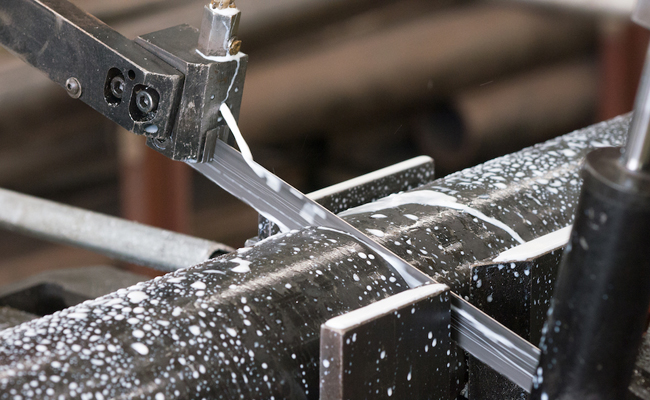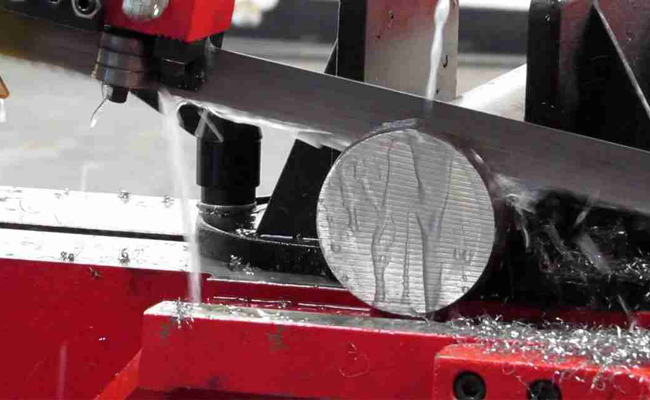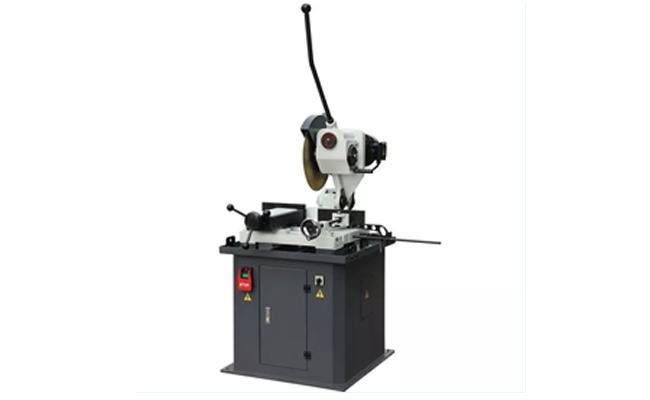TBK-4228B Double Column Band Saw
Cutting Capacity :
Cutting stainless steel rods requires tools that can handle its toughness and work-hardening nature. The “best” machine depends on the rod diameter, desired cut quality, volume of work, and your budget.
Here’s a breakdown of the most common machines used, from simple to industrial.
This is the most common and versatile tool for DIYers, hobbyists, and on-site work.
How it Works: A handheld power tool that uses a thin, abrasive cut-off wheel (often called a “zip disc”).
Best For: Rods up to about 1-2 inches (25-50 mm) in diameter. Quick, rough cuts.
Pros:
Inexpensive and widely available.
Very portable.
Can make cuts in tight spaces.
Cons:
Produces a rough, burred edge that requires grinding to smooth.
Not ideal for perfectly square cuts.
Can generate a lot of heat, which can affect the stainless steel’s properties in the heat-affected zone.
Requires operator skill for safety and accuracy.
Creates significant sparks and dust.

A common tool in metal shops and for plumbers/electricians.
How it Works: A portable, hand-held bandsaw with a continuous toothed blade.
Best For: Rods up to 4-5 inches (100-125 mm) in capacity. Good for general-purpose cutting.
Pros:
More controlled than an angle grinder.
Produces a cleaner cut with less burr.
Generates less heat than an abrasive wheel.
Can be mounted in a stand to act as a small vertical bandsaw.
Cons:
The cut can sometimes “walk” or drift if not held firmly.
Blades are consumable and must be appropriate for stainless steel (bi-metal or carbide).
Not as fast as an abrasive cutter for small diameters.

The workhorse of many machine shops and fabrication houses.
How it Works: A stationary saw where the cutting head (a bandsaw blade) pivots down into the material, which is clamped in a vise.
Best For: Cutting multiple pieces to length from long stock, including rods, bars, and tubing.
Pros:
Very accurate and repeatable cuts.
Excellent cut quality.
Can be set up for unattended cutting of multiple pieces.
Cooler cutting process extends blade life.
Cons:
More expensive and less portable.
Requires a bi-metal or carbide-tipped blade designed for stainless steel.

A high-precision cutting solution often found in industrial settings.
How it Works: Uses a circular, toothed blade that operates at a low RPM and is flooded with coolant.
Best For: High-volume production where a clean, precise, and burr-free cut is critical.
Pros:
Produces the highest quality cut of any mechanical saw—clean, square, and with minimal burr.
Very little heat generation due to the coolant.
Fast and efficient for repetitive cutting.
Cons:
Very high initial cost.
Not portable.
Requires maintenance of the coolant system.
The big brother to the angle grinder, but stationary.
How it Works: A stationary version of an angle grinder, using a large (14″ or 355mm) abrasive cut-off wheel. The operator pulls a handle to lower the spinning wheel onto the rod.
Best For: Fast, rough cutting of thick stainless steel rods and bars.
Pros:
Extremely fast cutting on large diameters.
Simple and robust machinery.
Cons:
Very loud, messy, and produces intense sparks.
Rough cut quality with significant burr.
High heat generation.
Consumable wheels can be expensive over time.
For the most demanding applications, these methods are used:
CNC Fiber Laser Cutter: Used in high-tech fabrication shops. It can cut complex profiles and is extremely fast and accurate. An expensive option typically not used for simple rod cutting unless it’s part of a more complex component.
Waterjet Cutter: Uses a high-pressure stream of water mixed with abrasive garnet. It can cut any thickness without generating heat (a “cold” process), which is critical for some stainless steel applications. Also very expensive.
| Machine | Best For | Cut Quality | Cost |
|---|---|---|---|
| Angle Grinder | DIY, On-site, Small Diameters | Rough | Low |
| Portable Bandsaw | General Purpose, Medium Diameters | Good | Low-Medium |
| Horizontal Bandsaw | Shop Work, Repetitive Cuts | Very Good | Medium |
| Cold Saw | High-Precision, Production | Excellent | High |
| Abrasive Chop Saw | Fast, Rough Cuts, Large Diameters | Rough | Medium |
For a one-time cut on a 1/2″ rod in your garage: Use an Angle Grinder with a stainless steel cut-off wheel.
For a small shop cutting various sizes up to 3″ frequently: A Horizontal Bandsaw is your best investment.
For a professional fabrication shop needing perfect, burr-free cuts: Invest in a Cold Saw.
For cutting a 4″ thick stainless steel rod quickly: An Abrasive Chop Saw is the most practical choice.
Always remember safety! Wear appropriate safety glasses, gloves, and hearing protection when cutting metal. For stainless steel specifically, ensure you are in a well-ventilated area or wear a respirator, as the fumes from grinding or cutting can be harmful.
Cutting Capacity :
Cutting Capacity :